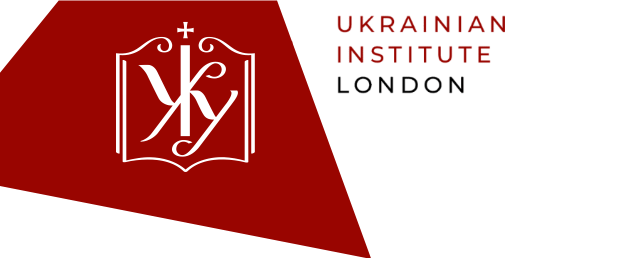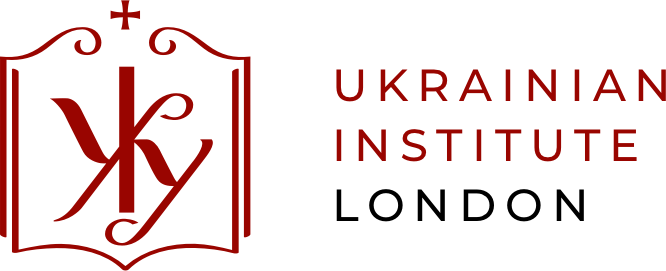The key factor in the protests’ success has been decentralisation and inclusivity.
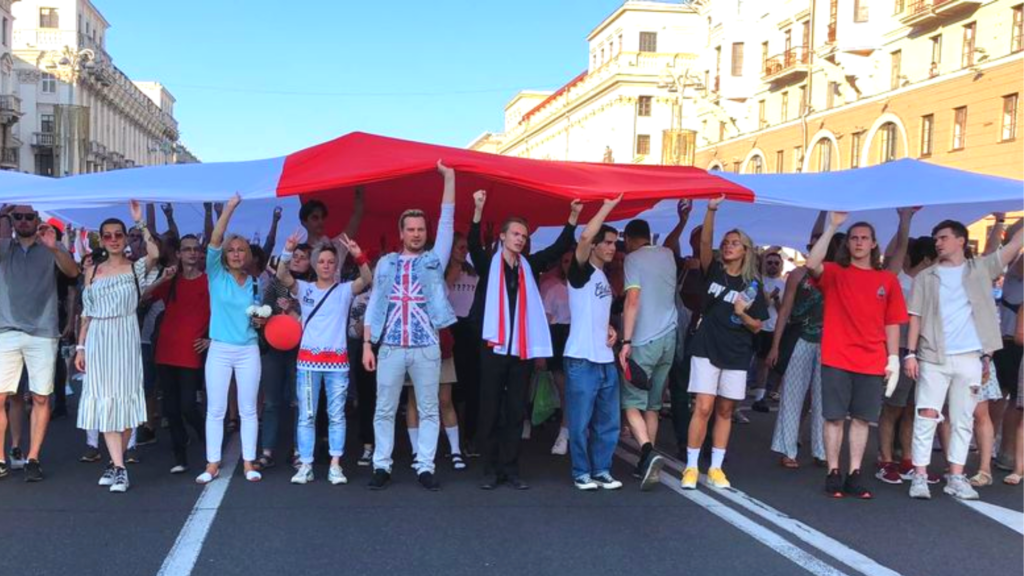
AUTHOR
James Bolton-Jones, Master’s student in Russian and Post-Soviet Politics at UCL School of Slavonic and East European Studies and Graduate of the Ukrainian Studies Programme at the University of Cambridge.
One of the most striking elements of the ongoing protest movement in Belarus has been the crucial and prominent role of women. It was fitting, then, that the London Ukrainian Institute convened an all-female panel to discuss the urgent question of “People power in the face of state violence in Belarus” on 9 September.
The discussion, chaired by Professor Elena Korosteleva, an academic researcher focusing on democratisation and European politics who is from Belarus, featured three engaging speakers. Alena Minchenia, a social scientist and gender scholar from Belarus; Nadzeya Husakouskaya, a scholar and researcher at Amnesty International who has investigated gender-based violence against women in the conflict-affected Donetsk and Luhansk regions of Ukraine, and is also Belarusian; and Nataliya Gumenyuk a prominent Ukrainian journalist specialising in foreign affairs and conflict reporting.
First, Korosteleva gave some background to the rapidly changing situation in Belarus. The protests were triggered by the 9 August presidential election, which handed victory to incumbent Lukashenka with over 80% of the vote. These elections were widely regarded as brazenly fraudulent, with unofficial exit polls indicating a decisive victory of up to 95% for challenger Sviatlana Tsikhanouskaya.
What was presented by the state as Lukashenka’s victory was followed by waves of state violence unprecedented in Belarus, including mass arrests, intimidation, torture, disappearances and murder.
With protests now in their fifth week, Nobel laureate Svetlana Alexievich is the only member of the seven-member Presidium of the Coordination Council, created by Tsikhanouskaya to facilitate a peaceful transfer of power, who remains at liberty. The others have either been forced into exile or arrested, including the last member of the trio of women at the protest movement’s forefront to still be in Belarus, Marya Kalesnikava, who is in a Minsk prison after resisting deportation to Ukraine.
It was in the context of this fraught and complex situation that this illuminating and insightful discussion took place.
State violence
For Minchenia, the disproportionate level of violence unleashed on protestors after the election result was announced was a key trigger for subsequent demonstrations. Since the state has a monopoly on violence in Belarus, Minchenia observed that people expect to be able to rationalise measures being taken. But in this case the shocking level of brutality was impossible to accept, so more protests ensued.
Gumenyuk compared this to the protest movement in Ukraine in 2013-14, when the beating up of students who were protesting against Yanokovych’s delay in signing the Ukraine-EU Association Agreement turned the protest’s focus away from Europe and onto opposition to police brutality.
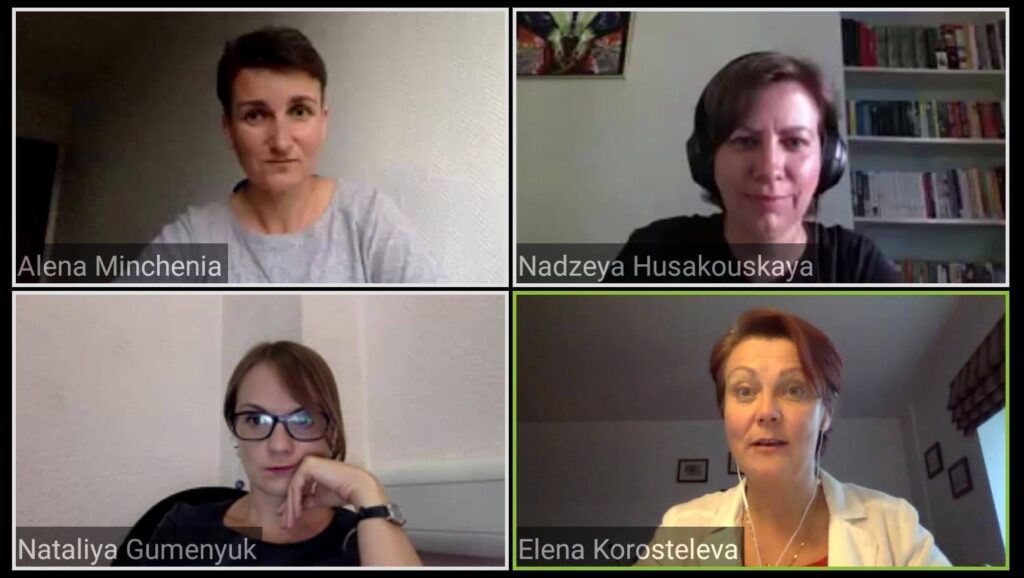
Panel discussion, 9 September 2020.
Minchenia noted that initially, the authorities had seen the protests as hierarchical, and so had imprisoned presidential challengers like Siarhei Tsikhanouski and Viktar Babaryka, believing that by decapitating the protest movement’s leadership it would die down. When this did not work the state changed tactics, using violence and intimidation in an effort to cow protestors from the streets. These kinds of tactics had worked for Lukashenka before, Minchenia said, but this time they provoked moral outrage, sending more protestors onto the streets.
Peaceful protest
A remarkable feature of the protests has been their peacefulness, with protestors choosing to behave as peaceful and conscious citizens to counter-act state violence. Minchenia recalled one instance where a woman who had turned up to the protests drunk was asked to leave, as she was compromising the scrupulousness of the protests.
Women have been key to the peacefulness of the protests, as well as to their overall success.
Korosteleva remarked that the mass of women protestors are harder for the security forces, the so-called siloviki, to repress.
The role of women
Husakouskaya emphasised the role of the women in the lead up to the August election. Lukashenka, she said, has consistently made sexist remarks throughout his presidency, and in a speech at a Minsk tractor factory in May, said “the constitution we have is not for a woman” and that the next President had to be a muzhik (real man).
The huge protests which Tsikhanouskaya inspired and her unofficial election victory were and are directly linked to Lukashenka’s hubristic underestimation of women because it was his patriarchal and dismissive attitude towards them that enabled Tsikhanouskaya’s registration on the ballot as a presidential candidate.
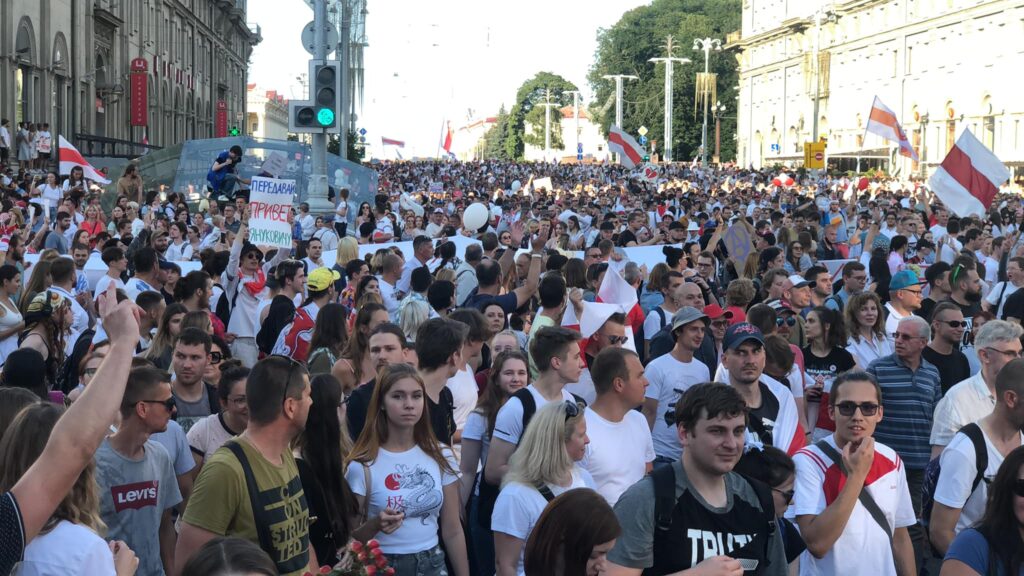
Minchenia drew attention to the trio of women: Tsikhanouskaya, Veranika Tsapkala and Kalesnikava, who have emerged as leaders of the protest movement. A decisive factor in the protests’ success has been their rejection of any pretension to power, in contrast to past male opposition figures who have all fought for political power, Minchenia said. By contrast, these three women have been empowered by a message of unity, with Tsikhanouskaya vowing to simply re-run fair elections if she accedes to power. Husakouskaya echoed Minchenia, saying that political solidarity has never outweighed rivalry in Belarus like this.
Husakouskaya identified the women protesters who formed a chain of solidarity on 12 August near Komarovsky market in Minsk, dressed in white and holding flowers, as key to changing the shape of the protests. Before, protests had been at night and highly tense, now women came out in the morning displaying solidarity and peacefulness. This, said Husakouskaya, became a template for later protests.
The shape of protest
Another key factor in the protests’ success has been their high degree of decentralisation and inclusivity, said the speakers. Minchenia noted that the protests have engaged lots of cities and towns with no history of protest and that this mass mobilisation has been enabled by the amount of different entry points into the protest movement.
Protests have ranged from the printing out of leaflets to disseminate among neighbours, to chains of solidarity, to symbolic acts of defiance like some streets in Minsk that have graffitied local places with images and slogans of protest. When the authorities try to remove this graffiti, it is replaced with new graffiti. This, said Minchenia, was a symbolic way of claiming a place as one’s own, declaring that we exist here and this is who we are.
Gumenyuk pointed out a key difference between Belarus’ protests and those in Ukraine in 2013-14, Moscow in 2011-13 and the so-called Arab Spring of 2011. Whereas these other protests often centred around large city centre squares: Maidan Nezalezhnosti, Bolotnaya Ploshchad’, Tahrir Square, the protests in Belarus have been “like water”, “everywhere”, and therefore much harder for the authorities to dismantle, Gumenyuk said.
Key to the ubiquity of the protests around the country has been their inclusivity. Both Minchenia and Husakouskaya emphasised how all groups have been welcomed into the protest movement, regardless of their age, sexuality or gender.
Korosteleva added that the protests have been self-organised from the ground up, with her own mother downloading the Telegram app through which much of the movement has been organised and using this to attend protests with her friends.
People power, peoplehood
At the heart of these protests, the panellists said, is a sense of shared dignity that transcends politics and nationalism, and is embodied by Tsikhanouskaya’s rejection of political power. Husakouskaya stressed that Tsikhanouskaya explicitly ran for change, not power, while Korosteleva noted that in Belarus we are seeing an expression not of nationhood, but tuteishyia (peoplehood), which is far more inclusive and powerful.
Gumenyuk contrasted this with the protest movement in Ukraine in 2013-14, which was highly politicised, leaving the protestors vulnerable to propaganda. Tsikhanouskaya’s unique approach has neutralised attempts to politicise the protests, and Gumenyuk compared her to the character of Frodo in Lord of the Rings, who carries the ring but successfully resists the temptation of its power.
The rhetoric of the protests, said Husakouskaya, has been post-nationalistic, simply demanding fair elections and foregoing claims to power.
Many aspects of the protest movement in Belarus discussed during this event, from its inclusivity to its peacefulness, from its decentralised structure to the prominence of women, are remarkable and inspiring. It remains to hope that Belarusian peoplehood prevails over the shocking and reprehensible violence committed by the state.
Watch the full event recording on our YouTube channel.
